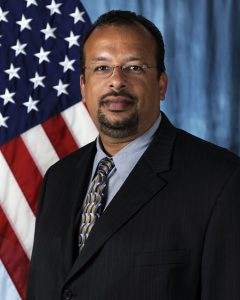
One function that every organization performs is recruiting. It ensures that there are always quality people that can be brought into the fold.
Upon hearing the word recruit, some people think of the military. I certainly did. I spoke to my local recruiter, and he made sure I met the standards that were required to enlist in the Air Force. It was a great help and I served for many years.
Now I work at the Air Force Academy (USAFA), and we work to recruit students from across the country to attend our institution. It is a more challenging and competitive environment than a typical university. The Academy offers a top-ranked education and a world of opportunity to those applicants who can meet the requirements.
From recruitment to admission
Recruitment at the USAFA is conducted by the Admissions Office, and, like a typical university, representatives attend college fairs, make high school, middle school and home visits, and speak at different venues across the country. These events provide prospective students with the opportunity to learn more about what the school has to offer and to speak with a representative.
There are three areas of recruiting I want to share:
- Go where your prospects are (Admission Liaison Officers (ALOs)
- Engage early (Future Falcons)
- Provide an experience (Summer Seminar).
Go where they are
Admission Liaison Officers, or ALOs, are Air Force Academy representatives who provide help to prospective cadets throughout the admissions process. The majority of ALOs are Air Force officers, but there are also retirees and veterans who volunteer their time in this position. Regardless of their status, all are knowledgeable about the Academy and the applications process. Additionally, they answer questions about life at the Academy and what it is like to be an officer after graduation.
There are ALOs all across the country that provide help locally, like enlisted recruiters. This allows the prospect to connect with the national institution at a local level and make a personal connection.
Engage early
Recruiting at a younger age allows students more time to learn about the Academy and to make sure they are doing what is required to receive an invitation to attend.
The Future Falcon program is designed for students in sixth grade through the first semester of their junior year. They are too young to apply to the Academy, but it provides a way to keep in touch with the Air Force Academy.
Students will register on the website, their name is placed in a database and they are sent periodic mailings that keep the student informed about us and updated on what needs to be done to be competitive for an appointment. The belief is the earlier you start, the better your potential to be accepted.
By using this tool, we are able to build a relationship with students over several years. Not only are they given guidance to become a strong candidate, they are learning about the institution as a whole and the career that follows.
Provide an experience
Summer Seminar gives students between junior and senior year the chance to experience the Academy first-hand.
The week-long program shows the rewards and challenges of life as a cadet. Additionally, they teach what it means to serve as an officer in the Air Force after graduation.
This is a very immersive outreach program. It allows the participants to sleep in the dormitories and eat at the dining facility, like our cadets. They also attend workshops, led by our faculty, to learn about the majors they can choose from if they attend. There is a physical component and a practice Candidate Fitness Assessment.
The program finishes with a military exercise where attendees can experience what it is like to be a freshman here. On this day everyone will have room inspections and knowledge tests like freshmen cadets.
What you can learn from the USAFA recruiting process
I know we are fortunate to have the reach and ability to recruit at a national level and keep prospects engaged. Think about what assets you do have for recruiting. Are your employees knowledgeable and excited about the organization to share with their circles? How do people know what you have to offer and stay connected from an early stage? How can people experience your organization? Is it possible to have an Open House to give people a peek on the inside?
Although they are not the only means of recruiting, I believe that if you can answer the questions above, people will be clamoring to be a part of your organization.
What recruitment strategies do you use in your own organization?

Harry Lundy is originally from New York State and is a veteran of the U.S. Air Force. After his service he was a contractor for the German Air Force. He also worked in radio and TV broadcasting before returning to work for the Air Force as a public affairs officer. He is currently the deputy director of Community Outreach at the United States Air Force Academy in Colorado Springs, Colo., USA. Connect with him on LinkedIn.



